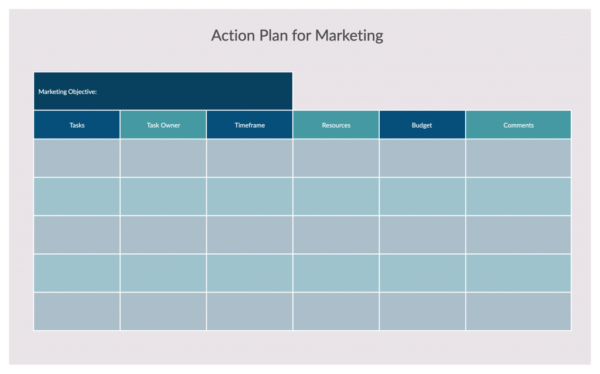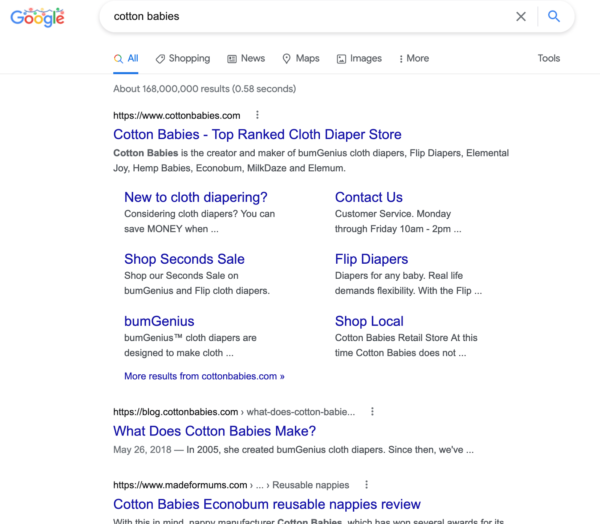
Experts recommend that business-to-business companies invest 2% to 5% of their annual revenue back into marketing efforts, while business-to-consumer companies should invest 5% to 10% of their annual revenue on marketing efforts. When you’re investing thousands of dollars at a time, you must understand how that investment is working for you and what your return on investment (ROI) is.
A year-end marketing audit helps you do just that. Instead of guessing which marketing channels are working for you, conducting a complete marketing audit allows you to pinpoint your marketing successes, trim the fat, and improve your marketing strategy for the upcoming year.
This guide will show you how to prepare for your audit and work through a complete checklist of marketing audit action items.
Benefits of a year-end marketing audit
Doing a complete marketing audit can seem like a lot of work, but implementing this practice can be valuable to your business for several reasons.
An audit gives you a complete look at all your marketing efforts from the previous year. This ensures you know how much money you spent on your annual marketing efforts.
An audit also gives you a complete view of which marketing efforts were worth the investment and which weren’t. This means you can target how you spend your money in the coming year and improve your total ROI.
Finally, as you review previous marketing campaigns and strategies, you can spark new ideas and get excited about marketing for the upcoming year. This allows you to craft a strong strategy with creative ideas that cut out last year’s inefficiencies and improve upon what worked.
How to do a marketing audit
If you’ve never completed a marketing audit before, the task can feel overwhelming. However, the process can be broken into four main components: drafting a year-end report, reviewing last year’s goals, determining which strategies were successful, and creating an action plan for the coming year.
Drafting a year-end marketing report
Before you can begin auditing the year’s marketing efforts, you first need to have a record of all your marketing efforts that you can reference. This year-end marketing report will be used to help determine which strategies worked and decide how to improve your future marketing efforts.
Drafting your year-end marketing report will likely take a large chunk of the time you allocate to your marketing audit. It should include:
- Last year’s marketing strategy and goals
- A record of all marketing channels you used throughout the year
- Performance records for each channel throughout the year
- Amount of money paid for each marketing avenue
- Website performance, including heatmaps and mouseflow reports
Your year-end marketing report must be completed before you can begin analyzing how your marketing efforts went and how to improve them in the coming year.
Reviewing your marketing goals from the previous year
The next step in your audit should be evaluating your marketing goals from the previous year.
If you used SMART goals last year, it should be easy to determine which goals you met and which goals you did not meet. If you didn’t use SMART goals, it may be more difficult to decide which goals you met, but you can still take note of where you made progress and where you struggled to find your footing.
As you review goals from the previous year, it’s also a good idea to note how hard the goals were to achieve. If you met a goal, did you meet it easily, or did you really have to work for it? Likewise, if you fell short of a marketing goal, were you just a little off, or did you not even come close to your target?
Detailed answers to these questions can help you set realistic marketing goals for the upcoming year.
Determining which marketing strategies did and didn’t work
In addition to identifying which marketing goals you did and didn’t meet, it’s equally important to define which marketing strategies did and didn’t work.
First, take a look at your larger marketing campaigns. Ask yourself which fundraisers or events had the greatest turnouts, and which ones were not as successful as you would have liked. If any marketing events lost you money, make note of that as well.
Next, look at your smaller, day-to-day marketing choices. Examine:
- Which content garnered the most engagement from your customers
- Which advertisements yielded the greatest click-through rates
- Which newsletters and emails led to sales
The more data you have at your fingertips, the easier it will be to make smart marketing choices moving forward.
Keep in mind that just because a marketing strategy didn’t work for you this year doesn’t mean you should drop that avenue entirely. If experts in your field say that a certain avenue is worth exploring, but you haven’t yet found success with that approach, it may mean that you need to tweak how you’re using that strategy rather than eliminate the option entirely.
Creating an action plan with defined goals for the coming year
Your marketing action plan acts as a blueprint for your marketing success in the coming year. It should include:
- Your mission statement
- Your target audience
- Goals for the upcoming year
- Key performance indicators that you will use to measure success
- Your marketing budget for the coming year

When drafting your action plan, it’s usually a good idea to look at your main competitors. Seeing where they’re having successes can help you set goals for your own business. At the same time, observing where you provide more value than your competitors can be an inspiration for a marketing campaign that showcases what makes your brand special.
Your complete marketing audit checklist
Now that you understand the basics of a marketing audit, it’s time to get into the detailed work. This complete auditing checklist will walk you step-by-step through evaluating the key components of your marketing strategy.
Audit your website
Your website is the cornerstone of your online marketing. All other marketing campaigns — from newsletters to social media campaigns — will invariably direct your customers back to your website. For this reason, cleaning up your website and ensuring it’s the best it can be should be at the top of your end-of-year marketing audit checklist.
In today’s tech-savvy world, it’s not enough to just have a website for your brand. Your customers expect you to have a high-quality website that’s easy to navigate and helps them find the products they’re looking for.
At a minimum, your yearly website audit should ensure that:
- All links are working
- Pages with low traffic are examined and removed, if possible
- Contact information is reviewed and updated, if necessary
- Forms open easily and are up to date
- Pages load easily on both desktop and mobile devices
- All web pages are optimized to be used from a mobile device
- The website is easy to navigate
- Blog posts are not competing for the same search engine keywords, and competing blog posts are combined to create one long-form post instead
- The site is reviewed for how it competed in search engine results and is given a facelift, if necessary

After ensuring the website is technically strong, it’s a good idea to evaluate your site’s performance at a higher level. Read about the five keys to a strong website, and ensure you can check every item on that list before you finish this aspect of your yearly marketing audit.
Audit your social media presence
Approximately 4.2 billion people currently use social media in some capacity. On average, users spend almost two and a half hours each day on social media sites.
The ability for businesses to thrive on social media exists. At the same time, with so many users and posts to comb through, competition on these sites can be fierce. That’s why it’s important to be strategic about your social media presence.
During your year-end audit, you should ask:
- How many social media platforms are you using?
- How do the platforms you’re using compare with the platforms your key competitors are using?
- Which social media platforms generate the most engagement for your brand?
- Which types of posts received the most attention on each of your social media platforms?
- How well are you engaging with reviews, referrals, and questions on your social media accounts?
It’s also a good idea to look at social media trends — including using influencers and affiliate marketing — to determine whether these trends make sense for your business for the upcoming year. This is also a good time to decide whether you’re on enough social media platforms or whether it’s time to expand your influence to another platform.
Audit your content creation plan
If you don’t already have a blog for your business, now is the time to take a look at how a business blog can improve organic traffic and determine whether this is the year to implement this marketing strategy.
If you do have a business blog, your marketing audit is a chance to look at whether your blog is yielding the results you were hoping for. Instead of just asking whether your blog is generating as much traffic as you were hoping for, look at your blog in detail to determine which aspects are working and which are not.
Take a look at:
- Which blog posts are ranking high in search engines
- Which content is generating the most engagement
- Which content was shared or engaged with on social media platforms
- Which blog posts are still being visited well after their publication dates
- Which blog posts have backlinks from other sites
Once you have a deeper understanding of how your blog is performing, you can make decisions on how to adjust your content creation plan moving forward.
For example, you may notice that two or three posts are competing for search engine rankings for the same keywords. Reworking these articles so they target different keywords or combining them into one long-form article can improve your overall content performance.
Audit your paid online advertising
Most businesses use a mixture of organic advertising (through social media platforms and content creation) and paid advertising through avenues like Google Ads or Facebook Ads. Now that you’ve finished looking at how your organic advertising efforts have worked for you, it’s time to evaluate the success of your paid advertisements. This may include:
- Re-evaluating the results of any A/B testing you did this year
- Examining which paid advertisements got the most views
- Looking at which paid advertisements received the most click-throughs
- Deciding which target keywords you’re now receiving organic traffic for (and therefore no longer need to pay to generate traffic)
- Quantifying your ROI with each of your paid advertising endeavors
This is also a good time to look at new paid advertising opportunities. For example, TikTok has been taking off, so it may be time to decide whether advertising on TikTok is right for your business.
Audit your email advertising
Newsletter emails remain a strong advertising focus for many successful businesses. Emailing your current customers helps your brand stay in the forefront of their minds, while emailing potential customers can convert them into loyal, paying customers in the future.
If you haven’t put together an email list yet, now’s a good time to put together a list of contacts and figure out how you want to start drafting your newsletters.
But if email curation is already a strong part of your marketing strategy, auditing your email advertising efforts can improve the success of this avenue. Take a look at:
- Which emails had the greatest open rates
- Which emails had the best click-through rates
- Which emails, if any, resulted in people unsubscribing from your newsletter
- Which emails prompted sales or helped people complete their checkouts
Audit your in-person marketing
The last step in auditing your marketing is looking at your in-person advertising efforts. This includes any advertising done at your physical location if you have one, as well as appearances at festivals, fairs, and other community events.
Auditing your in-person marketing efforts can be trickier than auditing your online efforts because in-person marketing rarely has ready-to-view metrics to examine.
Instead, you may have to rely on reports from your employees, notations taken throughout the year, and your memory of events to decide how well marketing efforts are working.
This may include:
- Looking at how many coupons were used in a given period, or how in-person sale prices affected your revenue during a specific period
- Considering how well in-person events were attended
- Examining which of your flyers or brochures went out of stock during community events
- Taking stock of how many brands in the community you sponsored or donated products or money to
One benefit of having a small business is that you can thrive on community engagement. Donating products or money to events and representing your brand in your community can be an important, low-cost part of your annual marketing plan.
Outline a marketing schedule by mimicking last year’s efforts
Once you have examined your marketing successes, failures, and pain points, you can begin planning your marketing endeavors for the upcoming year.
One good way to do this is to draft a mock marketing calendar based on what you did in the previous year. Create this calendar as if you weren’t planning to change anything from the previous year. For example, if you posted on Facebook once a week in the previous year, create your mock calendar with a Facebook post written down for every week of the year.
You don’t have to be specific with your post titles at this point. It’s enough to put down the broad strokes, such as “Twitter post,” “Newsletter,” or “Community Event.”
This marketing schedule mock-up lets you see, in clear print, exactly how much marketing you did in the previous year and how that marketing worked into your schedule. As you start adjusting this marketing schedule for the coming year, you will be able to determine which periods of the year had fewer events — and can therefore be used to work on larger projects — and which periods of the year were already full.
Adjust your marketing strategy using information from your audit and your goals
Once you have a mock-up of your marketing strategy using last year’s information, it’s time to adjust that strategy using information from your audits and focusing on this year’s SMART goals.
Keep a copy of the original calendar mock-up. This helps remind you how much marketing you did last year, and it will keep you from taking on too much extra work this year — which would be unsustainable — or letting go of so many projects that you limit your marketing efforts.
Now is the time to write more specific information in your calendar. For example, if you noticed that video content tended to perform much better than other content on your social media accounts, you may decide to include video production as part of your marketing efforts for the coming year. However, to make that fit into this year’s budget and time constraints, you may need to limit or cut out another marketing avenue.
Allocate your marketing budget based on your new strategy and plans
The final step in your marketing audit is determining how much money you have to spend on each aspect of your marketing plan. Your notes on how much money you spent on each aspect of your marketing in the last year will come in handy.
First, you’ll want to set your overall marketing budget for the upcoming year.
Next, determine which items — if any — are staying the same as they did last year and are considered non-negotiable for you. For example, if your current content calendar worked well and showed strong results, you’ll want to continue paying your current writer to create that content.
There may be some items that you thought worked, but might be willing to reduce if necessary. Create a separate list for those items — you’ll come back to them later.
At this point, you’ll want to write down the marketing efforts you’re hoping to start or improve upon this year. Do some research on the costs for taking on these projects, and determine how much of your marketing budget you’re willing to spend on those line items.
Finally, look at how much money you have left in your marketing budget for the year. Now, you can decide which of your “maybe” items you can keep, which you need to adjust, and which you want to drop entirely.
Based on how you budgeted for each item in your plan, you may need to rework your marketing calendar for the upcoming year. When you’re done, you’ll have a strong plan in place to meet your marketing goals and exceed your successes from the previous year.
Make your marketing work for you with an audit and comprehensive action plan
Creating a complete marketing audit takes a lot of work. However, the time and effort are worth it if your audit helps you create clear, strong marketing goals for the coming year.
Get started by writing out a list of all your marketing efforts from the past year. This should include your website, any social media platforms you’ve used, paid marketing strategies, content creation, and physical marketing.
Once you have your list in hand, you can begin compiling your year-end marketing report, which you can use as a guide when completing the rest of your marketing audit.




